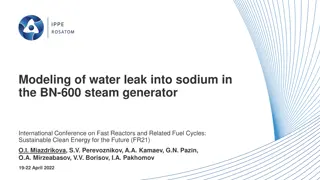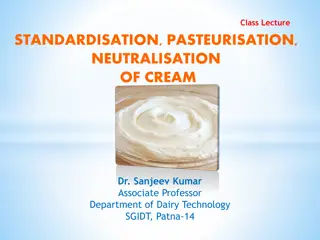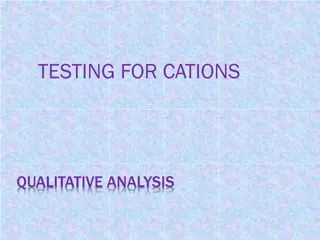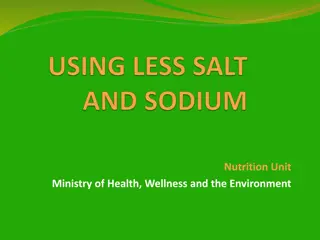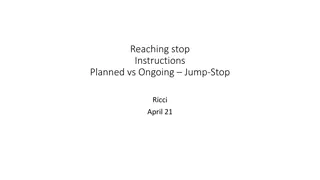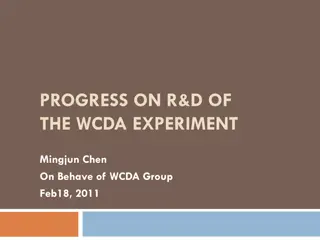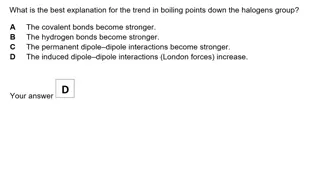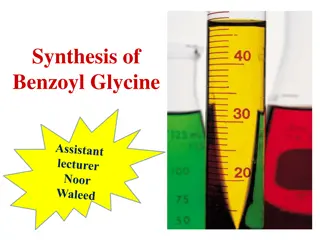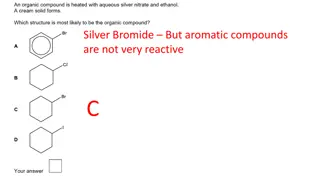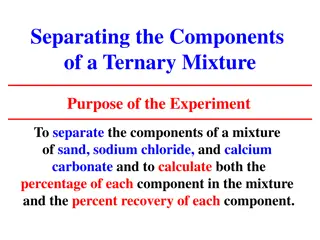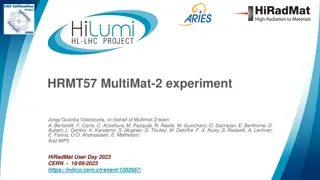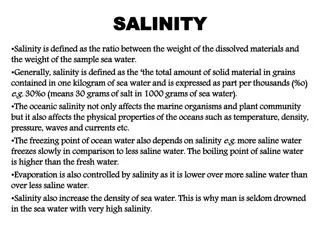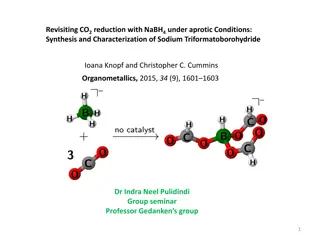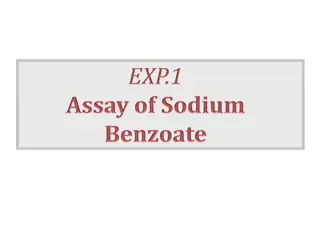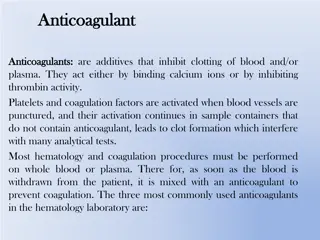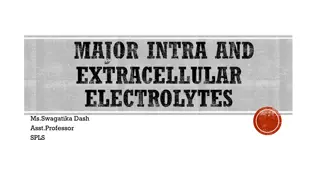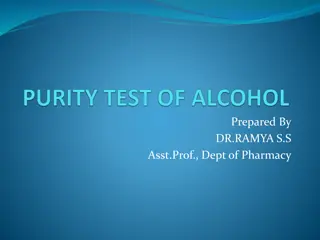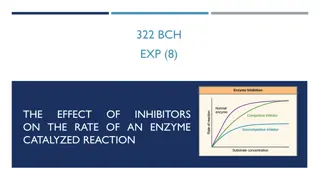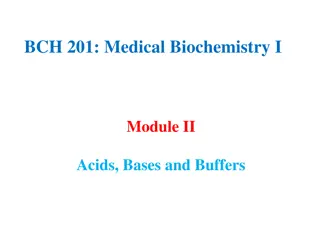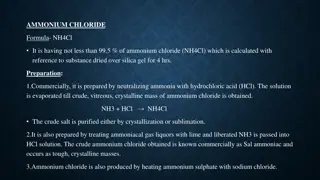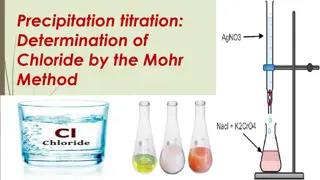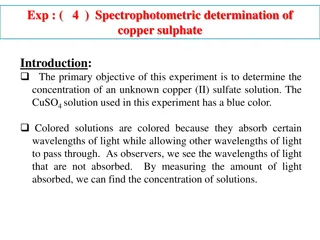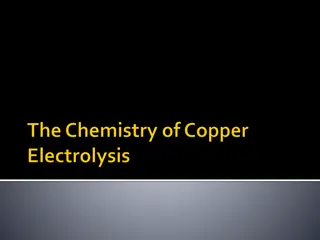Standardisation of Sodium Hydroxide Solution Experiment
The experiment focuses on the standardisation of sodium hydroxide solution using potassium hydrogen phthalate by titration method. It discusses the types of standard solutions, criteria of primary standards, and the difference between standardisation and titration methods. The objective is to determine the concentration of the solution through this process. Various types of titration methods such as acid-base titration and back titration are also explained.
Download Presentation

Please find below an Image/Link to download the presentation.
The content on the website is provided AS IS for your information and personal use only. It may not be sold, licensed, or shared on other websites without obtaining consent from the author. Download presentation by click this link. If you encounter any issues during the download, it is possible that the publisher has removed the file from their server.
E N D
Presentation Transcript
EXP 1 Standardisation of Sodium Hydroxide solution CLS 381 DaheeyaAlenazi
Outline What is standardisation ? Types of standard solutions. Experiment objective . Types of titration methods. Procedure Calculation
Standardization Use of standard solutions to measure the concentration of unknown solution called standardisation. Types of Standards solution: A- primary standard: is solution containing a known concentration of an element or a substance. It is prepared using a standard substance . It can be weighed easily, so pure that its weight is truly representative of the number of moles of substance contained such as KHP, NaCL and KH(IO3)2.
*Criteria of primary standard: 1- High purity. 2- Inexpensive and readily available. 3- Stable to drying temperatures, not be efflorescent nor hygroscopic. 4- High equivalent weight .
B-Secondary standard: Standards which do not meet the criteria mentioned earlier so their concentration must be determined in relative to primary standards through titration. One of these standards NaOH. NaOH contains impurities of NaCL, Na2C03 and Na2SO4 and readily absorbs H2O from the atmosphere .
Objective: To determine the concentration of a solution through the standardisation of sodium hydroxide( NaOH)using potassium hydrogen phthalate(KPH) by titration method. Concentration: The number of molecules of a substance in a given volume (expressed as moles/m3) or Molar.
Titration Titrations are used to determine the unknown concentrations of samples The main difference between standardization and titration is that standardization processes essentially uses primary standard solutions whereas titrations do not essentially use primary standard solutions.
Types of Titration methods 1-Acid-base titration: It used in volumetric analysis, in which a measured amount of one solution is added to a known quantity of another solution until the reaction between the two is complete. If the concentration of one solution is known, that of the other can be calculated. 2- Back titration: An analytical technique that allows the user to find the concentration of a reactant of unknown concentration by reacting it with an excess volume of another reactant of known concentration.
3- Redox titration: (Also called oxidation-reduction titration) is a type of titration based on a redox reaction between the analyte and titrant. 4- Complexometric titration: Complexometric titration (sometimes chelatometry) is a form of volumetric analysis in which the formation of a colored complex is used to indicate the end point of a titration.
The equivalence point Or stoichiometric point, of a chemical reaction is the point at which an added titrant is stoichiometrically equal to the number of moles of substance (known as analyte) present in the sample: the smallest amount of titrant that is sufficient to fully neutralize or react with the analyte.
Standardisation of Sodium Hydroxide solution(Part 1) KHP (strong acid) + NaOH (base) KNaP + H2O The acid and base will react together until reach the end point that is neutral. *If any additional acid or base is added, the solution will then become acidic or basic depending in which was added in excess. Indicator: Used to visualize the end point of reaction It is a chemical that changes color at a particular PH End point: refers to the point at which the indicator changes color in a colorimetric titration.
Types of indicators A) Strong acid titrations: / base against strong base / acid Phenolphthalein / methyl orange and methyl red fall with in the range of the inflection of this group. B) Weak acid and strong base titration: phenolphthalein is a suitable indicator as its pH range is 8- 9.8. However, methyl orange is not suitable as its pH range is 3.1 to 4.5.
C) Weak base and strong acid titration: methyl orange is phenolphthalein is not suitable. a suitable indicator while
Reagents 1- potassium Acid Phthalate(KHP) as Standard solution 2- NaOH Solution (0.1 M) 3- Phenolphthalein Indicator Solution.
Procedure 1- weight 0.5 grams of KHP into flask. 0.5 g KHP + 100 ml H2O + 3 drops of indicator 2- Dissolve KHP sample in approximately 100 ml of distilled water then add 3 drops of indicator. 3- Rinse a clean burette two times with 5 ml portions of the NaOH solution to be used when titrating Through waste, titrate to the first pink colour that persists for at least 30 seconds. 4- Calculate the molarity of the alkaline solution (NaOH).
Calculation Using basic stoichiometry, the moles of NaOH in the solution can be determined from the moles of KHP added to the reaction . KHP (acid) + NaOH (base) KNaP + H2O Each mole of KHP, it would be one mole of NaOH react completely. Since, we weigh out a particular mass of KHP, we will use as the standard. The molecular mass of KHP IS 204.23. Moles of KHP = grams of KHP/ Molecular mass of KHP = Calculate Molarity of NaOH for our experiment? Molarity = no of moles of solute / Litre of Solution (from titration)
moles of KHP = moles of NaOH. The burette indicate how much NaOH is being added to the KHP . This reading will be in (ml). Converted to Litre (litres = ml/1000). The concentration of the sodium hydroxide solution can be determined now by Molarity of NaOH = moles of NaOH/ litres of NaOH.
Example 0.8 grams of KHP is titrated with 40 ml of unknown NaOH solution. What is the molarity of the NaOH solution? Solution: Liters of NaOH = ml of NaOH / 1000 = 0.04 Liters. Moles of KHP = grams of KHP/ molecular mass of KHP = grams of KHP/ 204.23 = 0.8 grams of KHP/ 204.23 = 0.0039 moles
moles of NaOH = moles of KHP = 0.0039 moles. So, Molarity of NaOH = moles of NaOH / litres of NaOH = 0.0039 moles / 0.040 litres of NaOH = 0.0975 moles / litres 0.1M
Standardization of HCL solution (Part 2) During an acid-base titration, the pH changes in a characteristic way. A pH curve is found if the pH of the solution being titrated is plotted against the volume of solution added. Titration curves: A titration curve provides us with a visual picture of how a property of the titration reaction changes as we add the titrant to the titrand.
Table 1 The pH at the start, equivalence and twice equivalence for various combinations of acids as shown in the titration curves in figures 1 and 2.
The corresponds to the mixing together of stoichio- metrically equivalent amounts of acid and base. Note that the pH at equivalence is not necessarily 7 (table 1 ) equivalence point (stoichiometric point), The pH of a weak base at the end-point (equivalence) lies below pH 7. At equivalence, the solution contains the salt of a weak base: this is an acid (the conjugate acid of the weak base) and so the solution is acidic.
The pH of a weak acid at the end-point (equivalence) lies above pH 7. At equivalence, the solution contains the salt of a weak acid: this is a base (the conjugate base of the weak acid) and so the solution is basic.
Procedure of HCL (Part 2) Reagents: 1- Hydrochloric Acid (Reagent Grade). 2- Phenolphthalein Indicator 3- Standard NaOH Solution (0.1 M).
1-Introduce approximately 10 ml of the HCL solution into flask, touch the burette tip to the inside of the flask each time and rinse down with a 10 ml of water, then add 3 drop of indicator. 10 ml HCL + 10 ml H2O + 3 drops of indicator 2-Rinse a burette 2 times with 5 ml portions of a standard 0.1 M NaOH solution then through the waste. 4- Titrate with the standard NaOH solution until the faintest pink tinge persists for at least 30 seconds. 5- Calculate the Molarity of the HCL solution.
Calculation NaOH +HCL NaCl + H2O 1 mole 1 mole *1mole HCL = 1mole NaOH M(HCL) x V(HCL) = M(NaOH) V(NaOH) Molarity of HCL= M(NaOH) V from titration(NaOH) / V(HCL) =0.1 x V from titration/ 10ml = .M





